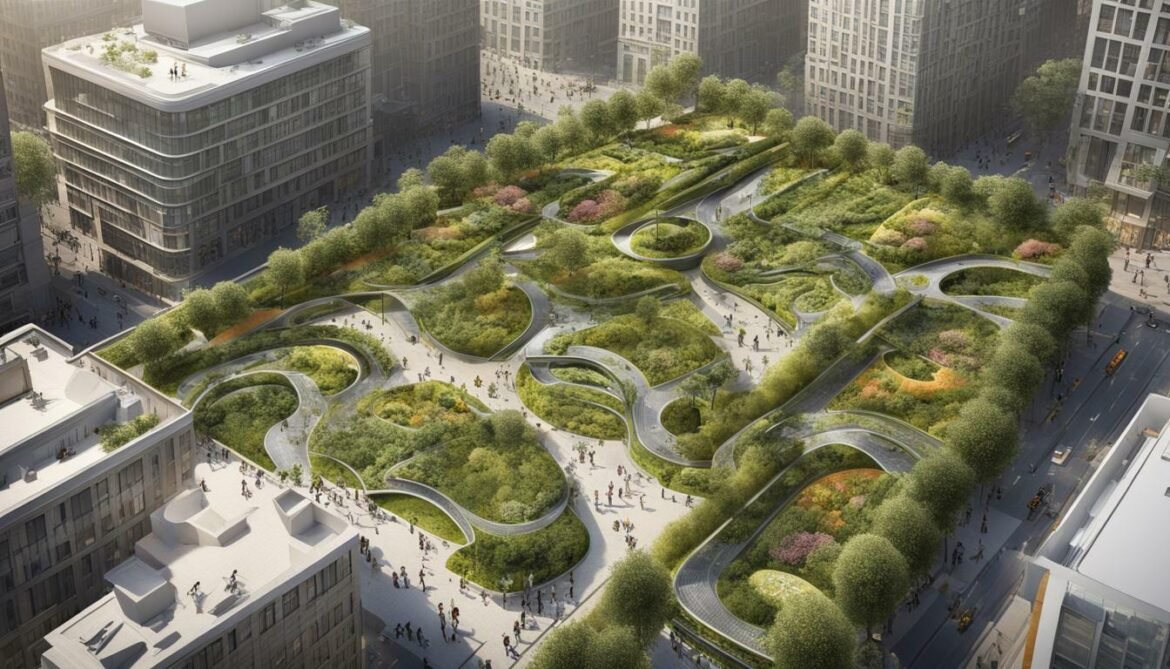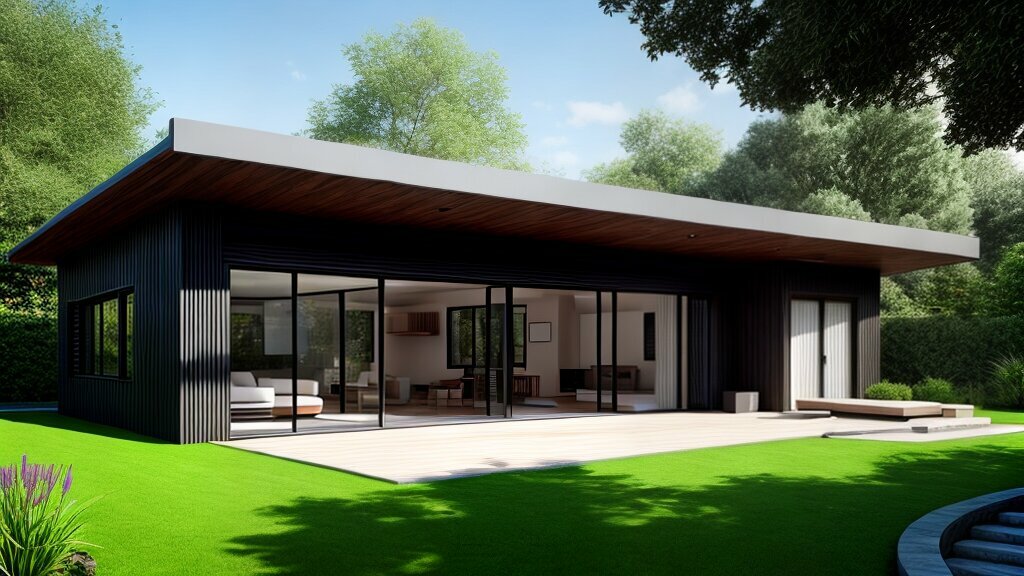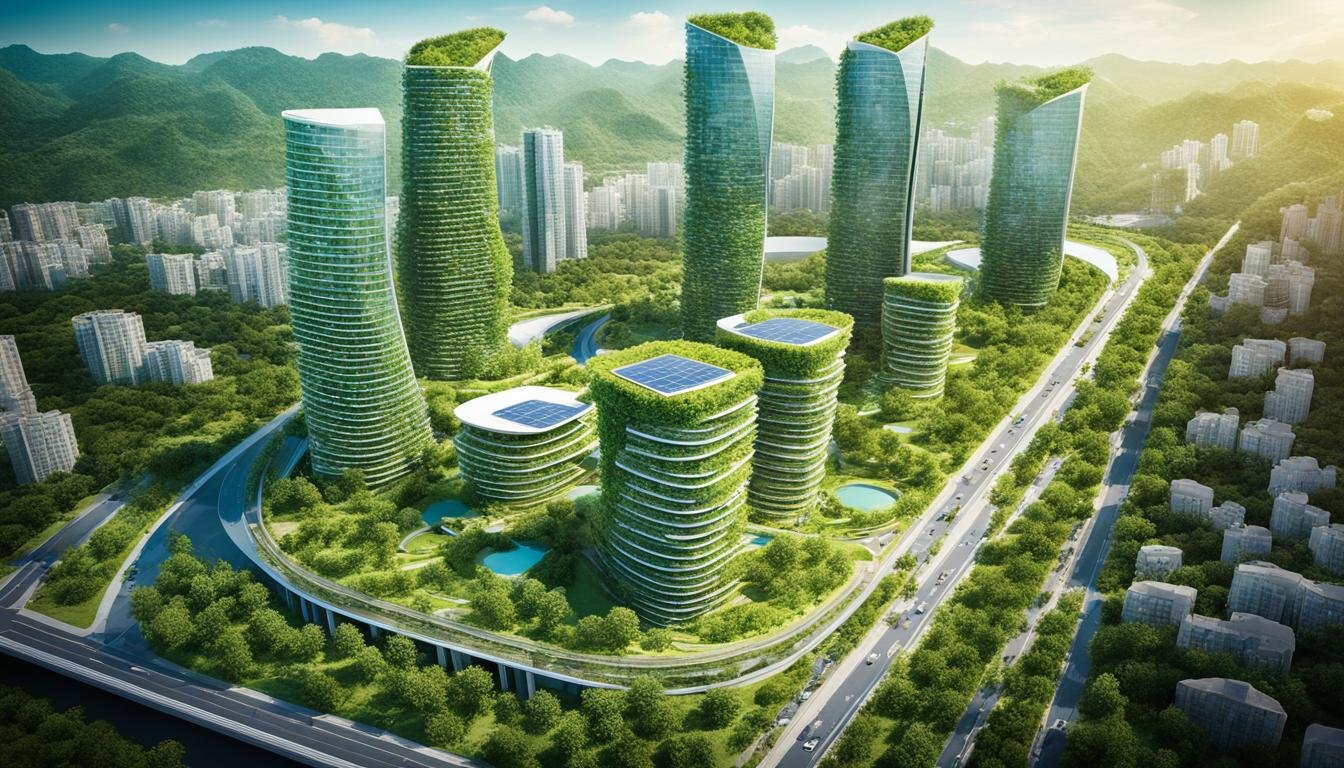Beyond Economic Expansion: The Rise of Post-Growth Urban Paradigms
Welcome to a new era of sustainable urban development. The traditional model of economic expansion at any cost is no longer sustainable. In its place, a new paradigm is emerging, one that prioritizes environmental stewardship, social equity, and quality of life. This new model is known as post-growth urban paradigms.
The Rise of Post-Growth Urban Paradigms represents a shift away from traditional economic development models that prioritized growth and expansion in urban environments. This new approach recognizes the need for sustainable urban development and prioritizes alternative urban planning approaches that prioritize environmental sustainability and social well-being.
Key Takeaways
- The traditional model of economic expansion is no longer sustainable for urban environments.
- Post-growth urban paradigms prioritize environmental sustainability and social well-being over growth and expansion.
- Alternative urban planning approaches are necessary for sustainable urban development.
Regenerative Cities: Resilience in Urban Environments
Regenerative cities are a new urban paradigm that prioritizes resilience and sustainability. These cities focus on regenerating natural systems, promoting resource efficiency, and creating sustainable urban ecosystems that enhance the well-being of people and the planet.
The concept of regenerative cities is gaining momentum as urbanisation continues to increase and cities face unprecedented challenges such as climate change, social inequality, and resource depletion.
| Features of Regenerative Cities | Examples |
|---|---|
| Green infrastructure | Chicago’s Green Alley Program |
| Zero waste initiatives | San Francisco’s Zero Waste program |
| Renewable energy sources | Reykjavik’s geothermal energy system |
Regenerative cities embrace a holistic approach that combines social, economic, and environmental sustainability. They prioritize the well-being of citizens and the natural systems that support them, creating a virtuous cycle of social and ecological resilience.
Regenerative cities are not just a concept but a practical solution to the challenges of urbanisation. Cities across the globe are implementing regenerative strategies to address pressing issues such as air pollution, water scarcity, and waste management.

Image source: https://seowriting.ai/32_6.png
Transitioning to a Post-Growth Urban Model
The transition to a post-growth urban model presents both challenges and opportunities. As traditional economic models based on endless growth become increasingly unsustainable, many cities are beginning to explore alternative approaches that prioritize social and environmental well-being. By embracing the principles of sustainable urban development, cities can create thriving communities that are resilient, equitable, and connected to nature.
Urban Sustainability Movement
The urban sustainability movement has gained momentum in recent years, with communities and policymakers coming together to promote sustainable practices and initiatives. From green building standards to renewable energy projects, cities are implementing a range of strategies to reduce their environmental footprint and create healthier, more livable urban environments.
One example of this movement is the “100 Resilient Cities” initiative, which aims to build urban resilience in the face of global challenges such as climate change, economic inequality, and social disconnection. Through this initiative, cities are provided with resources and guidance to develop and implement comprehensive resilience strategies that prioritize the needs of their communities.
Innovative Ideas and Projects
There are a variety of innovative ideas and projects that are helping to pave the way towards a post-growth urban model. For instance, the concept of “Smart Cities” involves using technology and data to improve urban services, reduce resource consumption, and enhance quality of life for residents.
Other examples include the “Sharing Cities” movement, which emphasizes the sharing of resources and assets among different community members, and the “Circular Cities” concept, which focuses on reducing waste and promoting resource efficiency through a closed-loop approach to urban development.

Through these and other innovative approaches, cities can create more sustainable and equitable urban environments that prioritize the needs of their communities and the planet.
Urban Innovation for a Sustainable Future
As cities continue to grow and face mounting environmental challenges, innovative solutions are needed to promote sustainability and shape a more resilient future. From transportation to waste management, technology and innovation are playing a crucial role in creating more efficient, eco-friendly urban systems.
One example of urban innovation is the use of smart grids to manage energy consumption and reduce carbon emissions. By integrating renewable energy sources and advanced metering technology, smart grids can help cities reduce their reliance on fossil fuels and improve energy efficiency.

Another area of innovation is transportation. As cities look to reduce traffic congestion and improve air quality, alternative modes of transportation such as electric vehicles, bike-sharing programs, and autonomous vehicles are gaining popularity. These innovative solutions can help reduce greenhouse gas emissions and create more sustainable urban transportation systems.
But innovation isn’t just about technology. Social innovation is also playing a critical role in shaping sustainable urban development. Community-led initiatives such as urban agriculture, local food systems, and co-housing can help create more sustainable and socially connected urban communities.
As urban innovation continues to evolve, it is important to ensure that these solutions are accessible and equitable for all members of the community. By prioritizing social equity and environmental justice, we can create sustainable urban systems that benefit everyone.
Reshaping Urban Economies: Post-Growth Perspectives
In the wake of climate change and growing social inequalities, many urban planners are rethinking traditional approaches to economic growth. Instead, they are embracing post-growth urban paradigms that prioritize well-being, social equity, and environmental sustainability over GDP and other growth-based metrics.
One example of this is the concept of circular economies, which aims to reduce waste and promote resource efficiency. In a circular economy, materials are reused and recycled, and the focus is on reducing consumption and limiting the depletion of natural resources. This creates new business opportunities while reducing the environmental impact of urban development.
An alternative approach is the concept of degrowth, which challenges the assumption that economic growth is always positive. Degrowth advocates for a reduction in consumption and production, as well as a shift towards local and regional economies. This would require a fundamental rethinking of urban design and planning, with a focus on creating self-sufficient communities that prioritize well-being over economic expansion.
However, transitioning to post-growth urban economies is not without its challenges. One major obstacle is the existing political and economic system, which is often resistant to change. Additionally, many cities are still focused on attracting businesses and promoting economic development at all costs, making it difficult to shift towards more sustainable models.
Despite these challenges, there are many innovative examples of cities that are successfully moving towards post-growth urban economies. Amsterdam, for example, has embraced the concept of the “circular city” and is working to become a zero-waste and carbon-neutral city by 2050.

In conclusion, transitioning to post-growth urban economies is essential for creating a sustainable future. By prioritizing well-being, social equity, and environmental sustainability, cities can create more resilient and liveable urban environments for all.
Sustainable City Living: Designing for People and the Planet
In the pursuit of post-growth urban paradigms, designing cities that prioritize human well-being, community engagement, and environmental stewardship is of paramount importance. Sustainable city living aims to create livable, accessible, and vibrant urban spaces that prioritize the needs of both people and the planet.
One of the key principles of sustainable city living is promoting walkability. Walkable cities have been shown to improve public health, reduce congestion, and decrease greenhouse gas emissions. Providing access to green spaces and nature is also crucial for promoting well-being and mental health. Cities such as Copenhagen, Denmark, have implemented green infrastructure and bike-friendly policies, resulting in a high quality of life for residents.
| Cities with Green Infrastructure | Benefits |
|---|---|
| Copenhagen, Denmark | High quality of life, promotion of physical activity |
| Munich, Germany | Reduction of urban heat island effect, noise reduction, improved air quality |
| Portland, USA | Increased property values, reduction of stormwater runoff |
Sustainable city living also prioritizes social cohesion and community engagement. Cities that foster strong social connections and a sense of community have been shown to have lower crime rates, greater economic resilience, and better overall well-being. One example of this is community gardens, which provide a space for residents to come together, grow their own food, and interact with their neighbours. The city of Detroit, USA, has embraced the community garden movement, with over 1,400 gardens throughout the city.

“Sustainable city living aims to create livable, accessible, and vibrant urban spaces that prioritize the needs of both people and the planet.”
Finally, sustainable city living involves designing cities that prioritize environmental sustainability and resource efficiency. This includes implementing renewable energy sources, reducing waste, and rethinking the use of resources such as water and materials. The city of Curitiba, Brazil, is a successful example of resource-efficient urban planning, with a comprehensive bus rapid transit system and an extensive recycling program.
By embracing sustainable city living principles, cities can improve quality of life for their residents while also promoting environmental sustainability. Through innovative urban design, we can create cities that are healthier, more social, and more resilient.
Conclusion
In conclusion, the rise of post-growth urban paradigms represents a significant shift away from traditional economic expansion towards sustainable urban development. Regenerative cities, as well as initiatives promoting urban sustainability, offer new opportunities for enhancing environmental stewardship and social well-being, while innovative urban design can contribute to reshaping urban economies and promoting sustainable city living.
The Importance of Embracing Sustainable Urban Development
It is important for us to embrace the principles of sustainable urban development, as this is crucial to creating a sustainable future for our planet. By prioritizing environmental sustainability, social equity, and quality of life, we can create cities that are resilient and regenerative, while supporting a transition towards post-growth urban economies.
Exploring Innovative Approaches for Reshaping Our Cities
To reshape our cities for the better, we need to explore innovative approaches to urban design and development. By adopting sustainable city living principles, we can design urban spaces that prioritize people and the planet, promoting walkability, access to nature, green infrastructure, and social cohesion. By embracing the principles of post-growth urban paradigms, we can create cities that are truly sustainable, equitable, and regenerative.
Let’s work together to embrace a sustainable future for our cities and our planet.
FAQ
Q: What are post-growth urban paradigms?
A: Post-growth urban paradigms are alternative approaches to urban planning that prioritize environmental sustainability and social well-being over traditional economic expansion. They aim to create cities that are resilient, regenerative, and promote a high quality of life for its residents.
Q: Why is sustainable urban development important?
A: Sustainable urban development is important because it allows cities to thrive while minimizing their impact on the environment. It ensures that resources are used efficiently, promotes social equity, and creates healthy and livable urban spaces for present and future generations.
Q: What are regenerative cities?
A: Regenerative cities are urban environments that focus on restoring and enhancing natural systems, promoting resource efficiency, and creating sustainable urban ecosystems. They aim to minimize waste, conserve energy, and create a harmonious relationship between nature and the built environment.
Q: How can cities transition to a post-growth urban model?
A: Transitioning to a post-growth urban model requires a shift in mindset and the implementation of sustainable practices. This can be achieved through the adoption of innovative policies, fostering community engagement, promoting sustainable transportation options, and embracing green infrastructure and renewable energy sources.
Q: What role does innovation play in shaping a sustainable urban future?
A: Innovation plays a crucial role in shaping a sustainable urban future. Technological advancements and innovative solutions can help reduce environmental impact, enhance quality of life, and create more efficient urban systems. From smart transportation solutions to renewable energy technologies, innovation can help cities become more sustainable and resilient.
Q: How can urban economies be reshaped in a post-growth context?
A: Reshaping urban economies in a post-growth context involves moving away from traditional growth-based metrics and prioritizing well-being, social equity, and environmental sustainability. This can be achieved through the adoption of alternative economic models, supporting local businesses, promoting the sharing economy, and investing in sustainable infrastructure and industries.
Q: What is sustainable city living?
A: Sustainable city living involves designing urban spaces that prioritize human well-being, community engagement, and environmental stewardship. It focuses on creating walkable neighborhoods, providing access to nature, promoting green infrastructure, and fostering social cohesion. Sustainable city living aims to create cities where people and the planet can thrive together.







